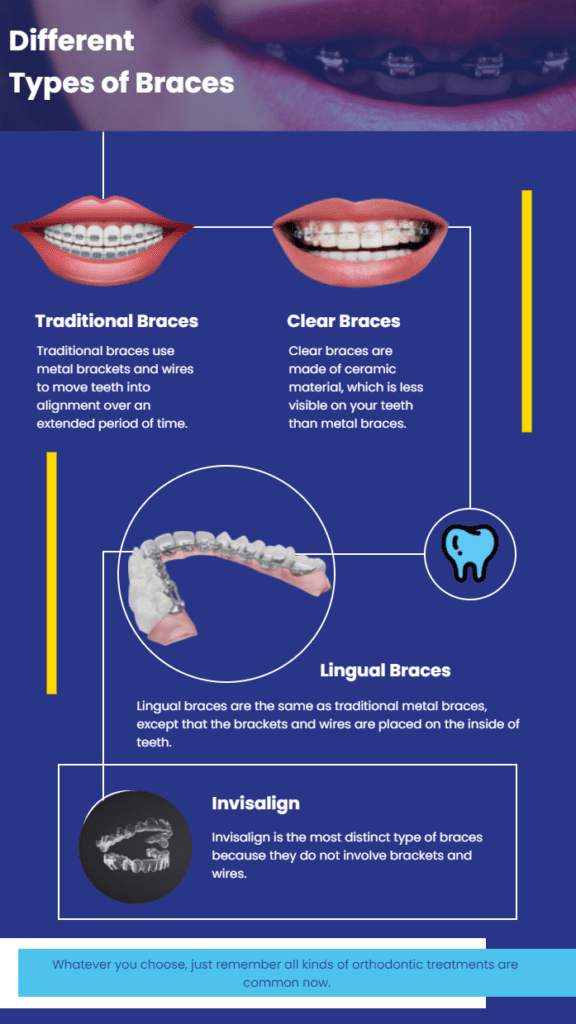Why Cumming Invisalign is the Perfect Choice for a Discreet Orthodontic Service
Why Cumming Invisalign is the Perfect Choice for a Discreet Orthodontic Service
Blog Article
Comprehensive Overview to Orthodontics Treatments for Fixing Dental Misalignments
In the realm of orthodontics, the journey to accomplishing a completely aligned smile involves a myriad of treatments tailored to deal with dental misalignments. From conventional braces to unnoticeable aligners and even surgical alternatives, the field of orthodontics offers a range of options to address varying degrees of dental abnormalities. Comprehending the complexities of each procedure, including their mechanisms, benefits, and potential drawbacks, is essential in making informed decisions concerning one's orthodontic treatment. As we browse through the thorough overview to orthodontic treatments for correcting dental imbalances, the detailed details of each method will certainly unravel, shedding light on the course towards a harmonious and useful oral placement.
Orthodontic Procedures Review

Regular changes and monitoring are critical parts of orthodontic therapy to make sure progression is on track and to make any type of necessary modifications along the means. By going through orthodontic procedures, patients can not only achieve a straighter grin but likewise enhance their total dental health and feature.
Conventional Braces: How They Work
When taking into consideration orthodontic therapies for dental misalignments, typical dental braces stand apart as a tried and true approach for remedying teeth placing. Conventional braces contain braces, cables, and bands that collaborate to apply continuous pressure on the teeth, progressively moving them into the wanted placement. The braces are connected to the teeth making use of an unique adhesive, and the wires are threaded with the brackets. By adjusting the stress of the wires, orthodontists can regulate the direction and pressure used to each tooth, directing them right into proper placement with time.
One trick facet of how conventional dental braces work is the procedure of bone improvement. As stress is applied to the teeth through the dental braces, the bone bordering the teeth is improved to sustain the new tooth placements. This renovation is important for the lasting stability of the corrected placement. Patients will certainly require normal adjustments at the orthodontist's workplace to make sure the dental braces remain to use the proper pressure for effective teeth motion.
Invisible Aligners: Disadvantages and pros
Invisible aligners supply a discreet and practical alternative to conventional dental braces for remedying dental misalignments. These clear, custom-made trays are virtually unseen when put on, making them an enticing choice for individuals seeking a much more visually pleasing orthodontic therapy. Among the key benefits of unnoticeable aligners is their removability, enabling less complicated upkeep of dental hygiene compared to typical dental braces. Patients can eliminate the aligners prior to consuming or brushing their teeth, her latest blog lowering the danger of food obtaining stuck in the appliance and simplifying the cleansing process.

Surgical Orthodontic Options
Surgical interventions in orthodontics present practical choices for resolving complicated dental imbalances that might not be effectively settled with conventional orthodontic therapies. While typical dental braces and unseen aligners can remedy numerous orthodontic concerns, specific cases require surgical treatment to accomplish optimum results. Surgical orthodontic options are generally advised for severe malocclusions, considerable jaw discrepancies, and situations where the underlying bone structure needs alteration to achieve proper positioning.
One usual medical orthodontic treatment is orthognathic surgical procedure, which involves repositioning the jaws to deal with functional issues such as trouble speaking or eating. This surgical treatment is commonly carried out in collaboration with an orthodontist that assists line up the teeth prior to and after late night dentist the procedure. Surgical orthodontics may also involve procedures to expose impacted teeth, eliminate excess periodontal tissue, or helpful resources reshape the jawbone to develop a more unified face account.
Before thinking about medical orthodontic options, patients undertake a detailed evaluation to figure out the need and potential benefits of such interventions. cumming orthodontics. While surgery might seem complicated, it can dramatically boost both the function and visual appeals of the smile in instances where standard orthodontic treatments drop short
Retainers and Post-Treatment Care

Post-treatment treatment includes following the orthodontist's directions diligently. This may include appropriate oral hygiene techniques, attending follow-up consultations, and using the retainers as suggested. Failure to adhere to post-treatment treatment instructions can cause regression, where the teeth gradually move back towards their initial placements. Consistent retainer wear, excellent oral hygiene, and normal dental exams are essential for maintaining the outcomes achieved through orthodontic surgical procedure and ensuring the long-term stability of the remedied oral positioning.
Conclusion
In conclusion, orthodontic procedures supply numerous alternatives for dealing with dental imbalances. Surgical orthodontic options are offered for extra severe misalignments. In general, orthodontic procedures can properly enhance oral wellness and visual look.
As we navigate through the detailed guide to orthodontic procedures for fixing oral imbalances, the intricate information of each technique will unravel, losing light on the course towards a practical and unified oral positioning. - cumming aligners
One of the most typical orthodontic therapies is the usage of braces, which are composed of steel brackets and wires that apply mild pressure to slowly change teeth right into the desired placement.When taking into consideration orthodontic therapies for oral imbalances, standard braces stand out as a tried and true method for dealing with teeth positioning. In addition, undetectable aligners might not be suitable for complex orthodontic issues that need even more considerable teeth motion, as they are usually advised for light to modest cases. Retainers are custom-made orthodontic devices created to hold teeth in their dealt with placements after the completion of orthodontic therapy.
Report this page